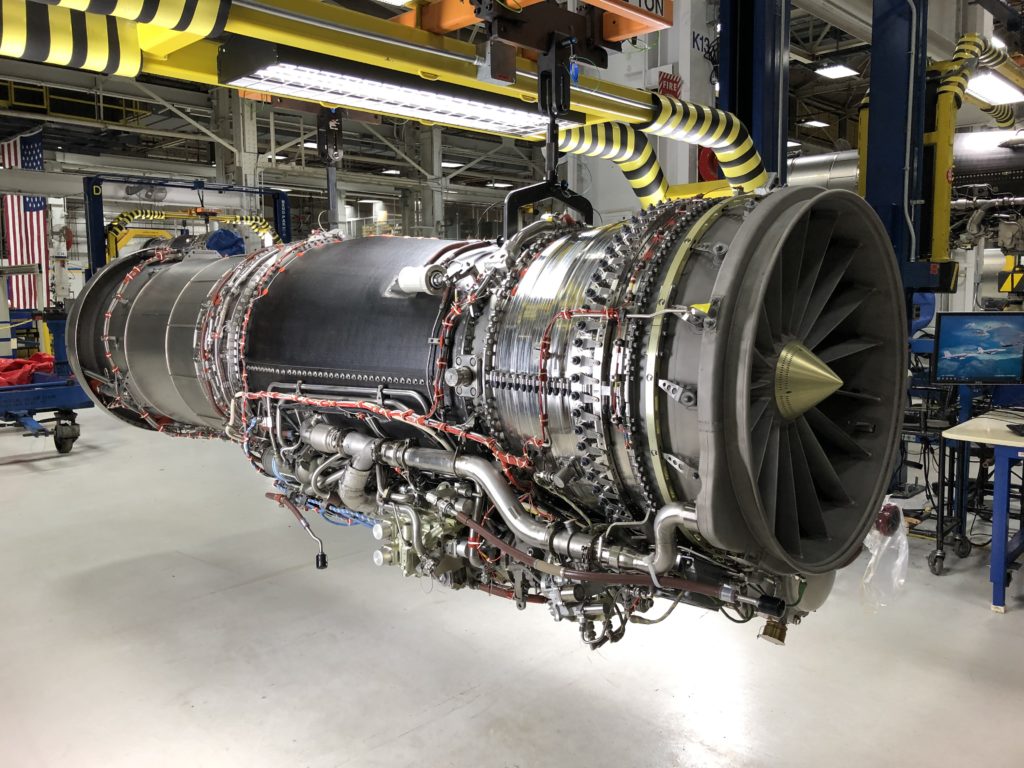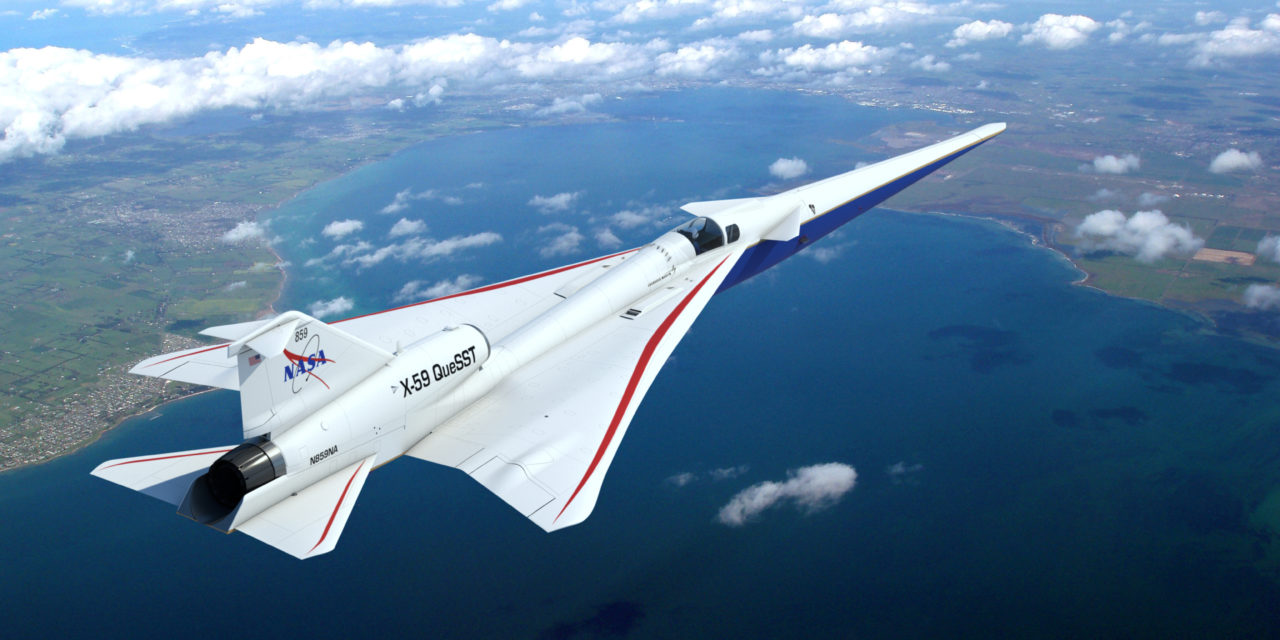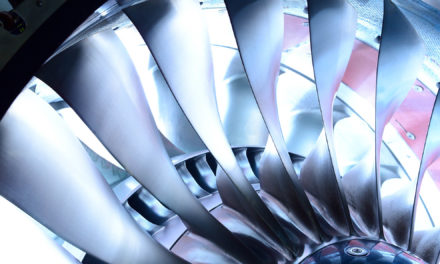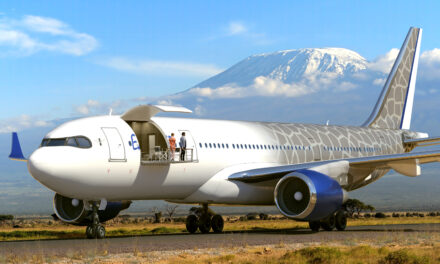By Fred Vergneres and NASA
NASA has just received the GE engine for the X-59 prototype. This step could mark the beginning of the reconquest of commercial supersonic flight. A much-awaited breakthrough in the business aviation sector.
Nearly 13 feet long, three feet in diameter, and packing 22,000 pounds of afterburner enhanced jet propulsion, the F414-GE-100 engine is now at NASA’s Armstrong Flight Research Center on Edwards Air Force Base in California.
There it will be checked out and inspected before it is transported to nearby Palmdale for eventual installation into NASA’s X-59 Quiet Supersonic Technologyairplane, which is now under construction at Lockheed Martin’s Skunk Works factory.
“Taking delivery of the engine from General Electric marks another exciting, huge milestone for us in building the X-59,” said Raymond Castner, the propulsion lead for the X-59 at NASA’s Glenn Research Center in Cleveland.In fact, two engines were delivered. One to serve as the primary engine and the other to be used as a backup when needed. “This just adds even more anticipation as we look forward to seeing that big flame come out the back of the aircraft as it takes off for the first time,” Castner said.
Assembled and initially tested at GE Aviation’s Riverworks facility in Lynn, Mass., the engine will power the X-59 on missions to gather information about how the public will react to the quieter sonic booms the aircraft is designed to produce – if they hear anything at all. Data collected will be shared with federal and international regulators to help them set new rules that may allow supersonic flight over land and enable a whole new market for commercial faster-than-sound air travel.
“It’s important to note that neither the X-59, nor this particular engine, are prototypes for a future commercial supersonic airliner,” Castner said. “This hardware is just for proving the airplane can produce quiet sonic thumps and measure community response.”
Procuring the power
As preliminary designs for the X-59 were put together several years ago, the initial plan was to power the aircraft with the same jet engines used by NASA’s F/A-18 research jets based at Armstrong. “We had an inventory of spare engines and parts and thought we could use the engines we already owned, but that didn’t pan out,” Castner said.
The problem was the engine – GE’s model F404 – couldn’t generate enough thrust to achieve the flight performance goals for the X-59. As designed, it took two of the engines to power the F/A-18, but the X-59 only had room for a single engine.Working with GE, the solution was found in adapting the F404’s next-generation improvement, the F414 engine, into a configuration that would both satisfy the X-59’s power needs and physical size.
Anthony Hazlett, GE’s X-59 demo model engineer at the Lynn facility, was responsible for leading the group that came up with the unique engine design for the experimental supersonic airplane.“We had developed a single-engine version of the F414 for Sweden’s Saab JAS 39E Gripen fighter that we determined would work for the X-59 with some modifications, so we derived a new engine model, the F414-GE-100,” Hazlett said. “The tried and true guts of the engine, all the turbomachinery, are the same or very similar. But the engine’s external design and the way the engine operates was upgraded.”
That included something as complicated as writing new control systems software so the engine and X-59 could talk to each other, and something as relatively simple as adding plumbing in new places so fuel could flow from the airplane to the engine.

Some assembly required
Although not considered a big deal, another difference between the X-59 engine and the Gripen jet engine it was originated from is the installation method. But that doesn’t mean the process will be any easier. “There is still a significant chunk of effort that lays in taking something that’s well known and installing it into a new aircraft,” Hazlett said. “So, we’ll have a team from GE present to help Lockheed Martin with the process.”
Versions of both the F404 and F414 engines have included track hardware to assist in installing the powerplant. Either the engine is put on a cart and placed at the back of the aircraft to roll it right in, or it’s placed underneath the airplane and a lift is used to raise the engine into place – in both cases using the track hardware as a guide. But to save weight and space, the X-59’s version of the F414 does not have the tracks, so the engine – which will be placed underneath the aircraft and lifted – will rely on human eyeballs and hands to manually guide it into place.
Once mechanically bolted in place, electrical, fuel, and various other lines will be hooked up and the whole engine/aircraft combination system tested. That will lead to the first time the engine is fired up within the aircraft as it remains in place with brakes on and restraining tethers fastened. “This whole process will take several months to perform as various tests are scheduled within certain windows that are available to us as assembly on the airplane continues,” Castner said.
Factory fresh
Although the engine is based on the design of the Gripen’s engine – known as the F414-GE-39E – GE did not just take a 39E engine in stock and modify it for NASA to use on the X-59. “This is a whole brand-new engine birthed from raw metal,” Hazlett said. “The NASA team is getting a new engine straight from the dealership floor.”
As part of that manufacturing process, the engine already has undergone more than eight hours of successful operations on a test stand in Massachusetts to prove it would be capable of supporting the way the X-59 is expected to fly. A typical fighter mission will see the pilot move the engine throttle a number of times, with short bursts of high power between periods of average thrust. This affects the engine’s overall durability and design lifetime of its parts in a way that is fully understood. “With the X-59 we looked at how it will be flying, which is different from a fighter. It will have longer duration missions at high altitude with high power – often with the afterburner firing to reach supersonic speeds,” Hazlett said.
Putting the X-59’s engine through its paces at a GE test cell in Lynn showed it could handle the high afterburner usage and demonstrated all other design upgrades, such as the newly designed control software, would work as expected. “It’s been a great challenge for our design team to prove our assumptions and boundary conditions are still good, and we’ve met that challenge in every way,” Hazlett said.









